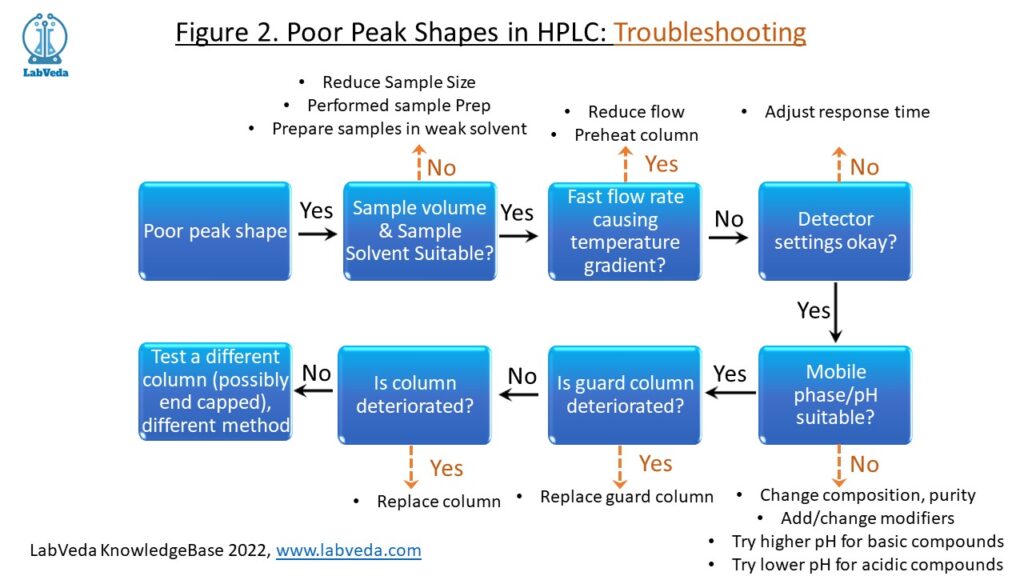Figure 1 shows various peak shape issues and their root causes observed while running an HPLC. These peak shape issues include peak tailing, peak splitting, and peak fronting. In this post, we discuss the root causes for these and their troubleshooting.
Poor peak shapes result from factors related to sample, stationary phase, mobile phase, and system hardware. Presence of metal due to mobile phase, sample, or stainless steel frits can cause peak tailing or fronting. Voids present due to improper connection can lead to peak tailing, splitting, or fronting. Sample overloading can have similar effects. Presence of reactive sites on the stationary phase can cause peak tailing. And a collapsed column bed can lead to peak fronting.

Figure 2 shows approaches to deal with poor peak shape issues. When troubleshooting these issues, one needs to take a systematic approach and rule out contributing factors one by one. Testing different sample sizes, sample solvents are very easy to test. If something in the sample matrix interferes with binding chemistry then various sample prep approaches need to be considered. These could be simple such as filtration, dilution or complex such as SPE (solid phase extraction). If temperature gradient across the column due to fast flow rate is suspected, then sample preheating before it enters the column can be considered.
Next, detector settings can be considered. A slower response setting can reduce noise, but it also results in peak broadening.
Mobile phase composition as well as quality is very important for obtaining good peak shapes. Acid modifiers such as TFA (trifluoroacetic acid), formic acid, acetic acid are important for obtaining good separation. Mobile phase should be free of metal contamination.
Finally, analytical column or guard column can be considered. If contaminated then rinsing these columns as per manufacturer guideline should recover them, otherwise they should be replaced with new ones. Endcapped column can be be tested to reduce analyte interactions with stationary phase. And in the event that none of these approaches improve peak shape then another method should be considered.


Really good information,
Upload to gc trouble shoot also.
Yes, thank you for your suggestion. We will add it soon.